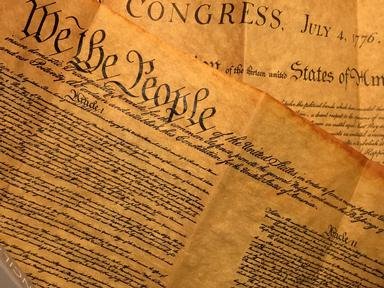Quiz Answer Key and Fun Facts
1. In 1620, a group of English Puritans landed far north of their intended destination in Virginia and created the first governing document for their new settlement. Originally called the Agreement Between the Settlers of New Plymouth, what name do we know this document by today?
2. Adopted in 1639 by settlers in New England, this document is widely regarded as the first written constitution in the Western world to establish a government by the consent of the governed. What is it called?
3. In 1754, as tensions with France and Native American tribes grew in the colonies, a prominent American inventor, printer, and future statesman proposed the Albany Plan of Union to encourage greater colonial cooperation. Who authored this early call for unity?
4. This often-overlooked founding father was the only person to sign all three major founding documents of the United States: the Declaration of Independence, the Articles of Confederation, and the Constitution. A statesman from Connecticut, he also shares a last name with a Union general to whom he was distantly related. Who was he?
5. On July 6, 1776, the Pennsylvania Evening Post became the first newspaper to publish what important document?
6. In 1778, the American colonies formalized their first major diplomatic agreement by entering into a written alliance with what foreign nation?
7. Adopted in 1777 and later ratified in 1781, what early American document aimed to establish a "firm league of friendship" among the thirteen original states?
8. Adopted on July 13, 1787, what document provided a framework for admitting new states to the Union while guaranteeing fundamental rights for people living in U.S. territories that had not yet achieved statehood?
9. What document, presented to the Constitutional Convention by Edmund Randolph on May 29, 1787, called for a strong central government with three branches, including a bicameral legislature favoring larger states and a national executive?
10. You've never heard of Jacob Shallus, the assistant clerk for the Pennsylvania General Assembly in 1787, but you've probably seen pictures of his handwriting. What document was Shallus paid the handsome sum of $30 to formally write down?
Source: Author
JJHorner
This quiz was reviewed by FunTrivia editor
stedman before going online.
Any errors found in FunTrivia content are routinely corrected through our feedback system.
